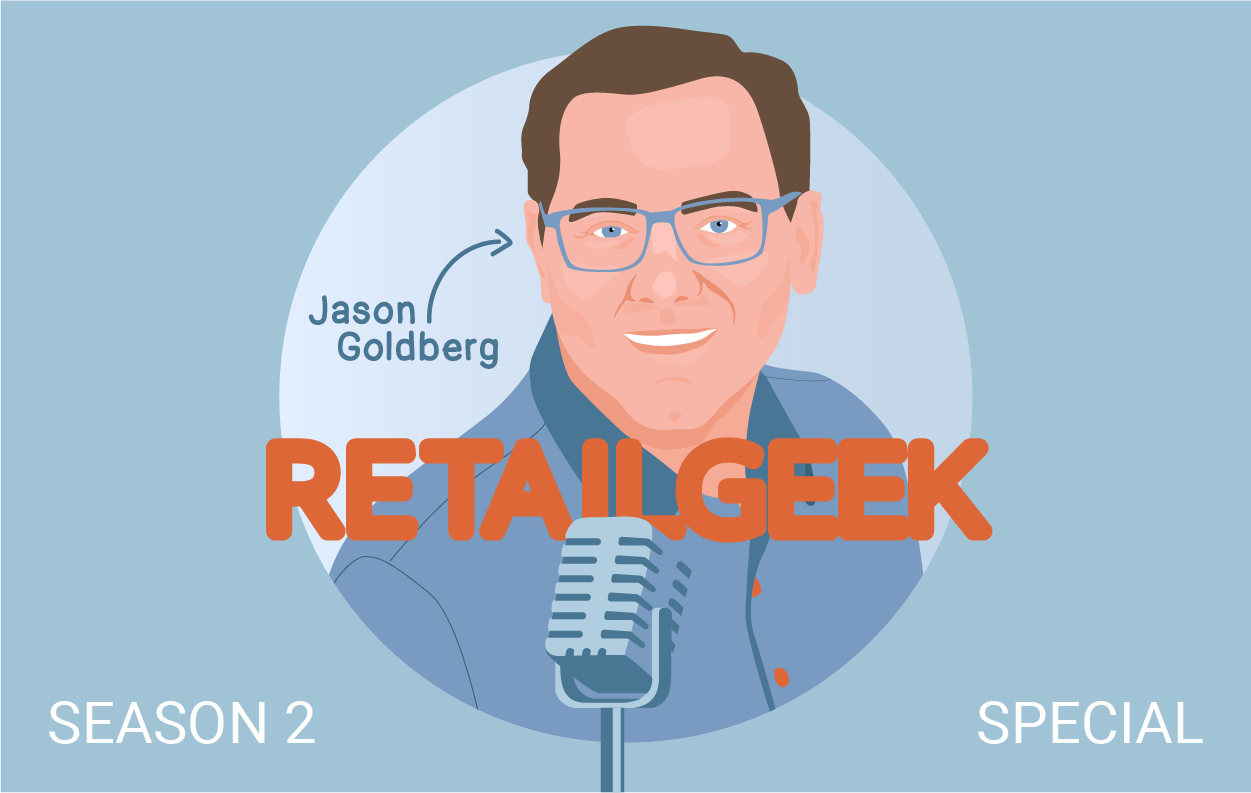
Click and mortar
How to build an online store
MAKING IT WORK PODCAST
Season 2 | Episode 3
With online store builders like Shopify, it's never been easier to attract the mass market. But should you go all in with your own website or dip your toe in the water with Etsy or eBay?
From creating cohesive customer journeys to handling knockoffs on marketplaces, this multigenerational set of entrepreneurs tell us what it's like running an online store – and how it's changed since the early aughts.
So should you splash out on that Shopify plan or carry on at that craft fair?
Listen now
SHOW NOTES
How do you get your store online?
Whether you’re selling cars, guitars, or hand-knitted cat scarves, it’s a given that you’ll need to embrace the online world to turn a profit. And just as physical retail outlets span the range from trestle tables at the makers’ market to department stores, the options for selling online are multiple.
So how exactly do you find the one that’s right for you, and take that make-or-break move into the world of online selling?
Those vital first steps
Twitter may seem like an unusual setting for an origin story, but it was the jumping-off point for Live Breathe Futbol founder Ebun Olaloye. “Before it existed as a brand, it existed as a Twitter account. I would just watch football, talk about it, that sort of thing...” When the buoyant and football-hungry audience inspired him to start his Philadelphia-based company, he looked to Big Cartel, the dominant ecommerce site of the time, but found that his business was quickly outgrowing the platform.
Kat Samardzija had a similar experience. Her Chicago workout wear business Locker Lifestyle started life on Etsy, but “…I really had no idea what I was doing. It helped me set up shipping. I was able to still see customer comments. But they take a chunk of your margins, and you don't get customer emails, and it's not as easy to interact with them. So I knew after a few months that it was time to transition off of Etsy."
Both Kat and Ebun came to the same conclusion with regards to their next move: a platform by the name of Shopify.
The Shopify effect
It’s a name that crops up time and again, with – as many entrepreneurs are quick to point out – good reason. “I was aware that a lot of other major brands still use Shopify today,” says Kat. “They have a lot of plugins, applications, automatic discounts you can create. It links really easily with email marketing, it has all of these things already set up.”
"How do we ship those orders? We need ShipStation,” says Ebun. “And ShipStation connects to Shopify. We need an inventory management platform.... okay, Stitch connects to Shopify as well."
“I remember when a day of seven orders was so exciting. I thought, you know, we're on to something.”
But even with pricing tiers starting at $29, additional costs such as transaction fees and plugins can quickly mount up. “I like the programs such as Shopify,” says SWISCO hardware supplier CEO Paul Pallas. “But I think starting small and not going really big at first is important, before you outsource to another company and spend a lot of money.”
Tackling the learning curve
Paul speaks from a position of experience, having built an ecommerce site for the family business back in 2004, before all-in-one platforms like Shopify existed. “I remember when a day of seven orders was so exciting. I thought, you know, we're on to something. This is working. And then we got up to 30 orders a day, then hundreds of orders a day, and eventually we decided to shut down the old repair shop and go all out on the ecommerce side.”
SWISCO has finally outgrown its existing platform. “Moving to the new platform is one of the biggest stresses in life, but it’s going to be worth it.”, says Paul. His affinity for site design has clearly been a boon, but not everyone has the same coding chops. “You couldn't control any other plugins, you had one basic storefront, and then if I were to build a site from scratch, it would take way longer,” says Kat of Etsy. “I would need developers. And even then, I wouldn't even get the same shipping discounts and other applications that are automatic with Shopify.”
The learning has taken place on both sides of the counter, though – as Paul remembers. “Back then, a lot of people absolutely did not trust the internet, and didn't want to place their orders on the internet. So they were fine with finding us on the web, but then they would want to call us. And we were so small at the time that we couldn't really handle the calls. We actually charged $5 convenience fees to place your order on the phone at the time and people would pay it. I couldn't imagine doing that today.”
The entrepreneurs






Nik Hawks






Paul Pallas






Ebun Olaloye






Kat Samardzija
Following the customers online (and vice versa)
Of course, customers are the whole point of any shop. But how do you reach them?
For Nik Hawks, the co-founder of Paleo Treats, it was actually a lack of local customers – and far-reaching ambitions – that prompted his move online. “After we sold the first 2,000 cookies at the CrossFit Games, we saw that there were not enough customers in San Diego to buy what we had. And we also saw that the product was something that people really wanted to pull from us – we needed to make sure we could connect with a national and even international audience. And the only way to do that in 2009 – and still today – is to go online.”
Ebun’s Twitter origins have stood him in good stead. “You might be following someone on Instagram or Twitter, and you see an ad for Live Breathe Futbol. Then maybe a few days later you see another LBF ad and go, ‘Oh, this looks even more interesting now’. You click around, you read the brand's story – they're really passionate about the game the same way you are, and… you feel a connection to the brand and the people behind the brand.”
The mileage of the organic approach will vary for different companies, however, as Kat discovered. “I did get a lot of organic sales on Etsy, but then I realized that the push and the traffic had to come from building the email list, posting on social media, and doing, you know, any PR that I could.”
For Kat, PR was a differentiating factor, particularly when it was bolstered by a grant from FedEx. “The FedEx grant had a lot of natural PR come along with it, which I was very fortunate for. So we did some videos, a podcast, articles – these things were great SEO. And with them linking directly to our site, I was seeing a lot of traffic.”
PR quickly became a huge driver for Kat’s business. “I learned 1000%, from doing free PR. So that helps me now transition and understand what's worth paying for, what can I expect, what's going to be a typical conversion. I tell all my founder friends to try and utilize as much as you can, especially if you're starting out young. Whether you're young or old, you can use it.”
The price of popularity
Whatever your product is – even if it really is cat scarves, lovingly hand-knitted by your gran – there’s going to be competition. And, as today’s entrepreneurs find all too often, imitation is often the most insincere form of flattery. With a presence on the likes of Amazon, Kat’s products have been targeted by counterfeiters.
“They were screenshotting our imagery and reviews, our actual packaging, my trademark names, our listings and everything. I even had people screenshot my reviews for an old product that I don't even sell on there any more, and adding it to their own website.”
Aside from the lost sales, there’s also the reputation damage that can ensue when customers unwittingly place an order with a scammer. “The product wasn't even arriving, and then they'd come to my store and think that that's something that I set up.” Fortunately for Kat, retail behemoths such as Amazon are also looking out for their own reputation, and will act against fraudsters to maintain a clean marketplace.
But sometimes aggressive competition ends up being anything but. “When we started in '09,” says Nik, “there was only one other paleo prepared food company, and that was Steve's Paleo Kits. There was only two of us in the whole world selling prepared paleo food.
“And I remember Steve called me out of the blue when we were at the CrossFit Games, and he's an East Coast, super fun dude. But East Coasters can be kinda combative – he was like, ‘Hey, man, I want you to tell me what you're doing and what's going on’. And we ended up being really good friends. We're two really small players. This is a really big pond: you're gonna do snacks, I'm gonna do dessert. Let's just help each other. Let's make sure that if we do any kind of marketing stuff that we help each other wherever we can. And that has been a really fun thing."
“I don't know if it's an east-west battle in paleo. I think there's a general East Coast/West Coast slight animosity. But, that's, that's just America, right? Nobody's gonna get along!”
Listen to the episode
More episodes



Ask the Expert Special:
Jason “Retailgeek” Goldberg
It's been a rollercoaster year for retailers. But what exactly has changed? According to consultant Jason Goldberg, not that much – we've just been propelled 10 years into the future. So let's time travel with him to... the present day.



Reinventing the wheel: Do you need to
constantly innovate?
‘Innovation' is a word we hear a lot, but what does it really mean? We talk to four small business owners about finding their inner-Elon and the constant pressure for entrepreneurs to innovate.